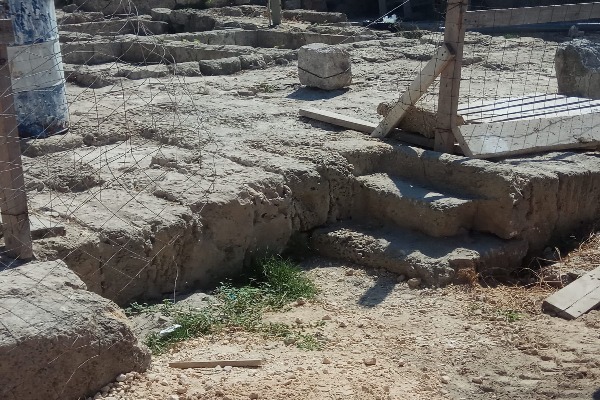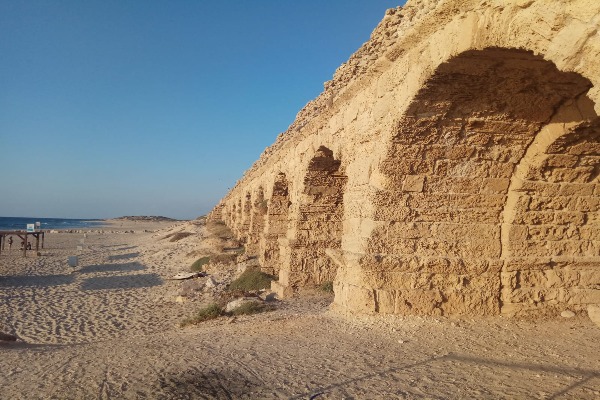Caesarea Maritima - the major harbor where the Bible says Paul set out for Rome
Current excavation reveals possible jail Paul was imprisoned before he set sail

Caesarea Maritima is located on the shore of the Mediterranean Sea in modern-day Israel. Today it is a major tourist attraction, including lots of finds from Greek, Jewish, Roman, Christian, Crusader and Muslim history.
Most every Christian pilgrim visiting the Holy Land has probably visited Caesarea, as it is directly connected to Paul of Tarsus himself.

Caesarea, initially discovered by a Greek ruler in the 2nd century B.C., was annexed by Jewish Hasmonean King Alexander Jannaeus in 90 B.C., and later fell under Roman rule in 63 B.C., becoming part of the province of Syria.
The city was then enlarged and mainly built between 13-25 B.C.E. by Herod the Great (the son of Antipater, an Idumean who previously converted to Judaism). It gained prominence as the Roman administrative hub in Judea, deriving its name from Augustus Caesar. Herod, a Jewish king but vassal to Rome, built the city atop the ruins of Strato's Tower, a name given to the Greek settlement at the very beginning.
Herod's ambitious project transformed it into a grand harbor city, featuring entertainment venues and a colossal harbor, unveiled in 9/10 B.C. This harbor, many scholars argue, was one of the most important in the Eastern part of the Roman “Mare Nostrum,” or the Mediterranean Sea, even competing with the great port of Alexandria.

The splendid harbor was tailored for Roman grain shipments, distinguished by innovative wavebreakers that were crafted from massive wooden crates. The crates were filled with Roman hydraulic concrete made of volcanic ash and other components and then sunk in the waters just off the coast to protect the harbor.
Named 'Sebastos' – the Greek translation of Augustus – in honor of the Emperor, the artificial harbor played a vital role for approximately one century before collapsing due to neglect and violent winter storms.
Following Herod's death in 4 B.C., Caesarea assumed the role of the seat of Roman procurators in Judea by 6 A.D., a period marked by intermittent tensions between Jewish and foreign inhabitants, culminating in riots during the procurators Felix and Florus' reigns.
The city played a pivotal role in the Great Jewish Revolt against Rome in 66 A.D. which originated in Caesarea. The revolt broke out spontaneously due to the persecution of local Jews in the city by the Greek-Roman pagans, according to scholars.
The Temple of Augustus and Rome in Caesarea (The “Augusteum”) was a magnificent edifice dedicated to Emperor Augustus, featuring a large typical Roman shrine and built facing the port and the sea so that everyone could see it upon arrival at the port.
It was constructed primarily from local limestone adorned with exquisite stucco and later embellished with marble elements. Later, during the Byzantine Christian period, the temple was replaced by a major Church, and later by a mosque after the Muslim conquest.

Tourists can see part of the old dock of the harbor, just in front of the “Augusteum” podium stairs. This ancient dock is quite a ways inland today. There are even some steps used for boarding the ships that survived from 2,000 years ago, which could easily be the very same steps used by Paul himself to board the vessel on his journey to Rome.
To touch these steps is very unusual and impresses and moves many visitors.

Herod's Great Palace, situated on the rocks of the shore, is identified by a prominent mound, boasts geometric mosaic floors, and later served as the residence of the Roman procurators. It was also the prison of prominent figures like Paul before he voyaged to Rome.

Paul's arrival in Caesarea in 57 A.D. (Acts 23 and 24) marked a significant juncture as he appeared before the Roman governors for his trial. In the Bible, the Book of Acts depicts Paul's defense against false accusations of public disorder and desecration of the Temple, highlighting his affiliation with the way of Jesus and belief in the resurrection of the dead. This is where he spoke with King Herod Agrippa and Queen Berenice.

Today, an underground area is being excavated that some scholars believe may have been where Paul was imprisoned. Located beneath the palace, the presence of early Christian graffiti inside suggests it may be linked to ancient Christian pilgrimages. One of them reads: “Lord (Jesus), help Procopius.”

The city's ancient theater, built initially by Herod and renovated during the 2nd century A.D., accommodated around 4,000 spectators and hosted various performances. Inside the theater, the famous "Pontius Pilate" inscription was discovered on a stone slab some decades ago, ending the debate on doubts about Pilate's historicity and his mentions in the Bible.
This stone was one of the first archaeological proofs of the accuracy of the Gospels, specifically for Pilate being mentioned as a Roman Praefectus/Procurator of Judea. The stone is being exhibited at the Israel Museum in Jerusalem alongside many other biblical artifacts.

Caesarea has many other remains waiting for tourists to discover: The Grand Circus, in operation until the 6th century; the few remains of the synagogue noted in Josephus' writing of "The Jewish War against the Romans;" the water aqueduct (built during Herod's time and renovated under Hadrian); and remnants of the Crusader-era Caesarea, showcasing impressive fortifications and a picturesque gate.
We recommend to read:

The All Israel News Staff is a team of journalists in Israel.
















